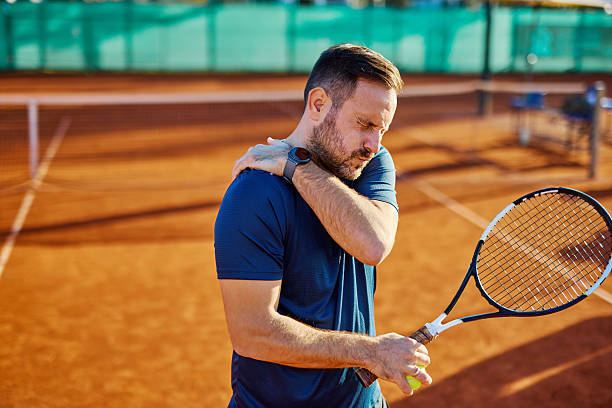
- September 23 2025
- Hunter Stark
Guide to shoulder pain rehabilitation for the pensacola athlete
Shoulder Pain in Tennis Players: Stark Performance’s Guide for the Pensacola Athlete 🎾
Serving an ace or ripping a forehand winner should feel powerful—not painful. Yet shoulder pain is one of the most common issues we see in tennis players across Pensacola, Gulf Breeze, and the Gulf Coast. The repetitive overhead motion of serving, smashing, and even groundstrokes can put tremendous stress on the shoulder joint, often leading to pain, reduced performance, and frustration.
The good news? With the right plan, you can overcome shoulder pain, regain confidence in your swing, and keep playing the sport you love.
Why Tennis Players Experience Shoulder Pain
The shoulder is the most mobile joint in the body, which makes it vulnerable to overuse injuries. In tennis, this typically shows up as:
-
Rotator cuff strain or irritation – from repeated serves and overheads
-
Impingement syndrome – pinching of tendons due to poor mechanics or tightness
-
Labral stress or small tears – common in athletes with repetitive overhead movements
-
Instability – the joint feels loose or slips due to muscle imbalance or fatigue
Combine these with long matches, poor warm-up habits, or inadequate strength training, and the shoulder is often the first area to break down.
Treatment Strategies That Work
At Stark Performance Physical Therapy, we don’t believe in cookie-cutter rehab. Every shoulder is different, but most players benefit from a combination of these strategies:
1. Calm the Irritation
We start by reducing pain and inflammation—this doesn’t mean complete rest, but smart adjustments to volume and technique so you can keep moving without further aggravation.
2. Build whole body strength and stability
Creating a strong body will help to stabilize the shoulder and create a solid foundation for you to move and be athletic again. We will find what your major impairments are and help you fix them so that you can move to the best of your ability and becoming the strongest you can be on the court.
3. Improve Mobility & Posture
Limited thoracic spine rotation, chest tightness, or restricted lats can overload the shoulder. Mobility drills and posture resets help restore smooth overhead mechanics.
4. Progress Back to Tennis-Specific Power
Once the shoulder is stable and strong, we reintroduce sport-specific drills like medicine ball throws, plyometric push-ups, and controlled serving progressions. This ensures you’re not just pain-free but also game-ready.
Prevention Tips for Shoulder Health
Want to reduce your risk of injury? Check out our blog on proper warm-ups for racket sports
-
Want to help reduce your risk of injury? Ask us about our Injury Prevention Guide for Racket Athletes (we will remind you at the end!)
Final Thoughts
Shoulder pain doesn’t have to sideline your game. With the right plan, you can reduce pain, improve mechanics, and serve stronger than ever. At Stark Performance Physical Therapy, we specialize in helping Pensacola tennis players and racket sport athletes recover from injuries and perform at their best.
📘 Want More Help?
We’ve created an Injury Prevention Guide packed with detailed exercises, prevention strategies, and recovery tips.
👉 To get your free copy:
- Go to the landing page - CLICK HERE!
-
Email us at Info@StarkPerformancePT.com
-
Text us at 850-912-9203
Just mention you’d like the Injury Prevention Guide for Racket Athletes, and we’ll send it right over.
Stay strong, serve smarter, and keep playing the game you love—pain-free. 💪🎾
-1.png?width=129&height=50&name=Untitled%20design%20(24)-1.png)
Leave Your Comment
Many desktop publish packages web page editors now use model text
search for sites their infancy.